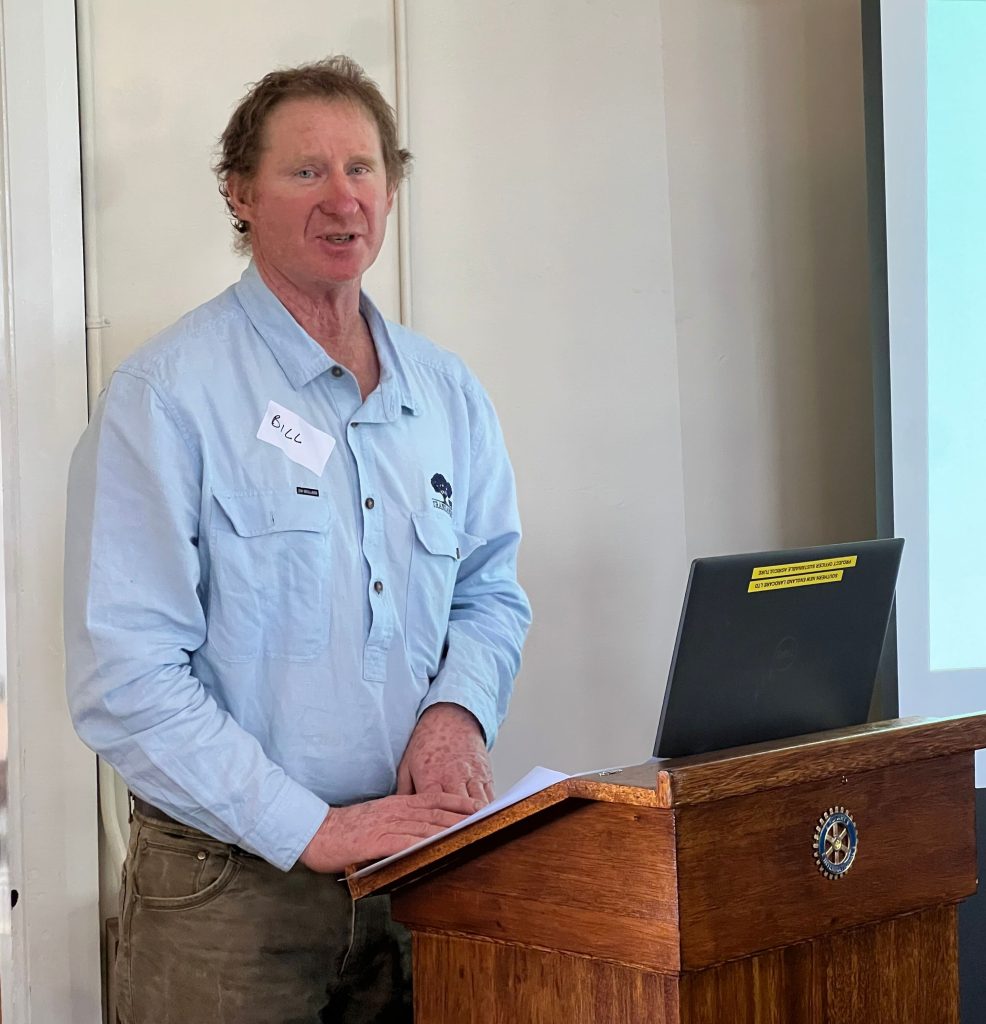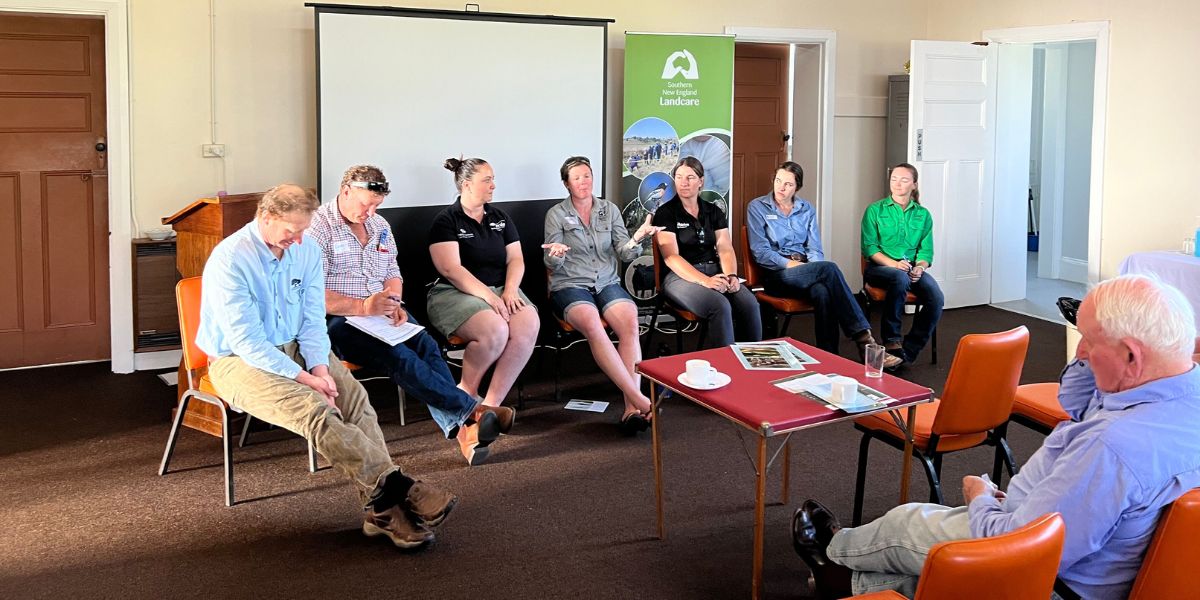More than 60 landholders and industry representatives gathered in Guyra last month for a Seasonal Update hosted by the Guyra Landcare Network, offering practical strategies for managing livestock, pastures and biosecurity across the Northern Tablelands.
The half-day event featured local experts and producers sharing on-the-ground experience, research updates, and timely advice as producers gear up for the summer season.
Perry Newman, Biosecurity Officer with Northern Tablelands Local Land Services (LLS), urged landholders to adopt a coordinated, neighbour-to-neighbour approach when managing feral animals.
“You don’t need a lot of baits, just the right placement,” Perry said. “That’s what we focus on in our training.”
LLS currently offers free training, baits and traps, and Perry recommended planning baiting programs around vulnerable periods like calving and lambing.
Meanwhile, local vet Dr Leisa Brown of Guyra District Veterinary Services issued a warning on brucellosis, a zoonotic disease that can be spread to humans and dogs, especially via feral pig meat and urine.
“Do not feed dogs feral pig meat, it’s a major risk,” she said.
Dr Brown also addressed grass tetany, recommending 5-in-1 vaccines as a year-round top-up during lush pasture growth. She advised producers to test magnesium and calcium levels via eye fluid in affected stock and to use 7-in-1 vaccines for broader clostridial protection.
Worm testing before drenching was highlighted as a cost-saving step to help manage resistance, along with simple measures like watering dusty yards to prevent pink eye.
Natalie Mendes, Pasture Systems Researcher with NSW DPI, outlined strategies for building more resilient and productive pastures.
She stressed the importance of rest periods, rotational grazing, and matching stocking rates to feed availability.
“Monitor pasture composition regularly, small changes can make a big difference in resilience,” she said.
Natalie also discussed species selection for temperate pastures in the New England region, encouraging landholders to identify underperforming paddocks and make gradual improvements.
And Marijke Hartman, Sustainable Agriculture Officer with LLS, provided a timely alert on pasture dieback, a condition now appearing in NSW after affecting large parts of Queensland. A recent outbreak was confirmed near Legume.
The condition affects tropical pasture species and thrives in high-biomass, moist, warm environments. Early signs include yellow or purple discolouration of leaves, followed by grass death. Mealy bugs are often found in affected areas.
“If you suspect dieback, contact your local LLS. Early reporting is vital as research continues into its causes,” Marijke said.
Guyra producer Bill Perrottet shared his experience managing Chilean Needle Grass, an invasive species that reduces pasture quality and is hard to control due to hidden seed heads in the plant’s base.

He trialled a combination of brassica break crops and selective herbicides, which yielded semi-productive results.
“It’s not perfect, but if you keep it vegetative, it can offer feed at certain times,” he said, noting the importance of financial analysis for each enterprise.
The event gave landholders an opportunity to share experiences, ask questions and access practical advice, strengthening the local support network and helping producers prepare for the months ahead.
Something going on in your part of the New England people should know about? Let us know by emailing newsdesk@netimes.com.au

